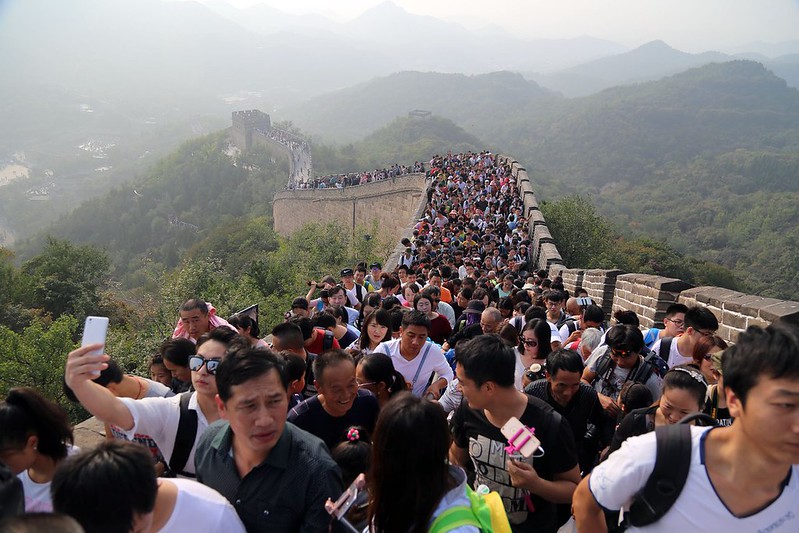3.3.1: The Human Population
- Page ID
- 70829
Section Hook
Why is the human species (Homo sapiens) so successful? We have the unique ability to not just occupy, but thrive, in diverse environments, even some of the most extreme. Through our social cooperation (despite large groups with no kin), language, art, and ingenuity (especially with tools and fire), our species became unstoppable. Modern humans have permanent settlements on all but one continent (Antarctica) and have exponentially increased our population. We have changed the world! However, this transformation has consequences for all species (including our own), necessitating updated survival strategies across the board.
Figure \(\PageIndex{a}\) Map demonstrating human spread across the globe. Image by Maulucioni (licensed under CC-BY 3.0)
Concepts of population ecology can be applied to human population growth. Demography is the study how human populations grow, shrink, and change in terms of age and gender compositions. Demographers also compare populations in different countries or regions. The human population has increased dramatically in the last few centuries and continues to grow (figure \(\PageIndex{a}\)). Overpopulation risks human well-being and compromises ecosystem functioning.

Figure \(\PageIndex{b}\): The human population continues to grow. China is currently the most populous country with nearly 1.4 billion people in 2019. Image by Sino-German Urbanisation Partnership (public domain).
Attributions
Modified by Rachel Schleiger and Melissa Ha from the following sources:
- Human Demography from Introduction to Environmental Science, 2nd edition by Caralyn Zehnder et al. (licensed under CC-BY-NC-SA).
- The Human Population from Environmental Biology by Matthew R. Fisher (licensed under CC-BY)


